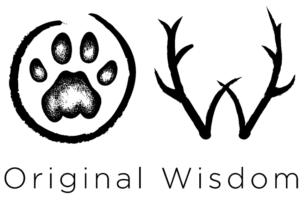This is an example of a Tracker program that we offer twice a year, upon demand. It moves around, from region to region, so trackers can learn a variety of species in multiple habitats. This page includes examples of a program including the Waterberg region of South Africa and the Tuli desert region of Botswana, and an example of an intensive Lowveld experience.
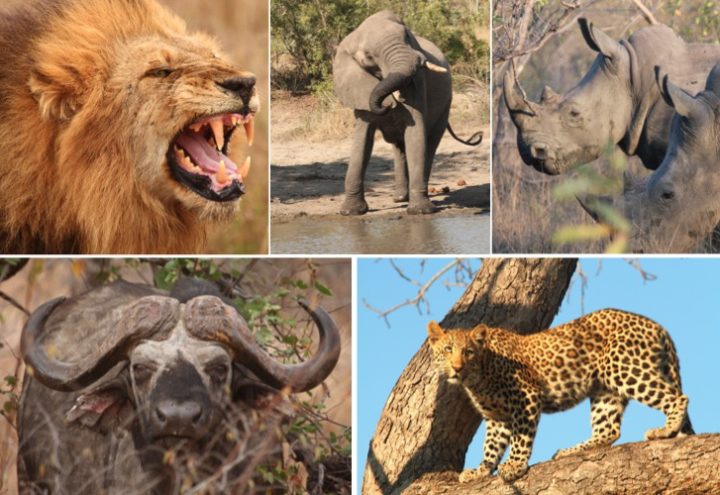
This 12 day program takes place in the Waterberg area of South Africa and in the Tuli region of Botswana, in March, and in the Greater Kruger Area in November.
While we conduct Track and Sign Identification and Interpretation and Trailing in both programs as the opportunities arise, the March program emphasises Track and Sign Identification and Interpretation more, while the November program places more emphasis on Trailing dangerous game. The March program runs at two superb venues specially selected for their suitability in terms of substrate and wildlife diversity. The first 4 days will be spent in intensive track and sign identification and interpretation in the Waterberg region of South Africa, followed by 8 days of trailing at in the Tuli region of Botswana. The November program runs exclusively out of our camp in the Greater Kruger Area, one of the largest open ecosystems in the world for free-roaming wildlife. Both programs are guided by two of Africa’s top-rated trackers, Kersey Lawrence and Lee Gutteridge.Whenever possible, we will sponsor an expert local tracker (Shangaan, Tswana, Zulu, or other) to be on the program with us in a true exchange of skills and culture that would otherwise be unattainable.
Program costs include everything except airfare to and from our starting and ending point at O.R. Tambo airport in Johannesburg, South Africa. Also excluded from the course price are any souvenirs you choose to buy, and any beverages, except water, that you choose to consume. Of course, you will also need a passport and to check into visa requirements (a visa is not needed for visits of under 90 days for United States citizens, at this time).
All levels of experience are welcome, as we will be able to split the small group into more and less experienced participants and tailor the experience to your skill level. A reasonable level of fitness and a serious interest in tracking and the ecological linking processes it creates are the only requirements. No vaccinations are required, but an updated tetanus shot is recommended. Ebola is not a concern in South Africa or Botswana, and malaria is uncommon in the areas we will be in – but check with your doctor.
More about the program:
It has long been known that Africa is the birthplace of tracking, which is, in turn, considered by the famed tracking author, Louis Liebenberg to be the very ‘Origin of Science’. Tracking has of course developed independently in many parts of the world in more recent times, but nowhere else is there such a depth of recorded tracking history and culture.
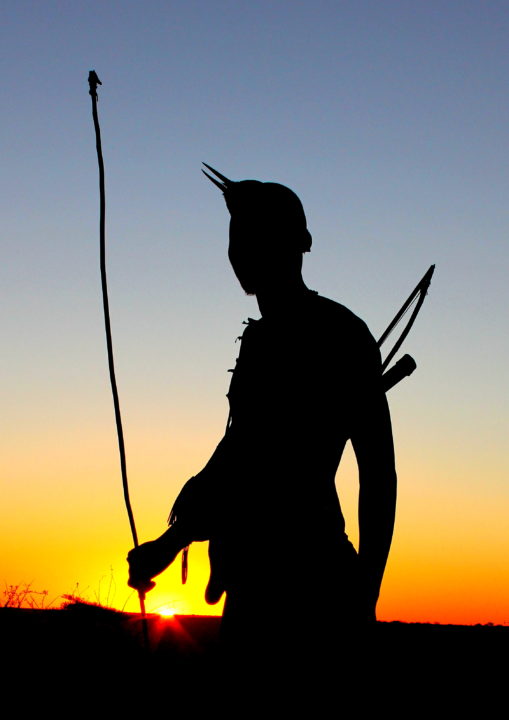
Trackers have roamed the plains, deserts and savannahs of Africa since time immemorial and it is our intention to join these trackers of old, trailing alongside their spirits as we walk their ancient pathways. Here we will experience the San tradition of ‘capturing the spoor’.
We will explore these specially selected habitats, literally in the footsteps of the Khoisan who have inhabited these regions for more than a hundred thousand years! We will actually enter some of their ancient shelters, and experience the African sand beneath our feet, exactly as they did for millennia before us.
You will be hosted on this journey by Kersey Lawrence (from the USA) and Lee Gutteridge (from South Africa), both qualified evaluators on the Cybertracker system and highly experienced in the field of tracking and walking with Africa’s dangerous game.
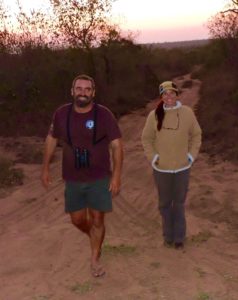
Kersey Lawrence is a wildlife ecologist and an award-wining university-level teacher who spends half the year in Africa and the other half in the USA. She is currently working on her PhD, which focuses on trackers and tracking in Southern Africa. With well over two decades of survival, wilderness and tracking experience she is also a highly qualified tracker in her own right, within both the USA and South Africa. She is, in fact, amongst the most highly qualified trackers in the world in the CyberTracker System and is currently the first and only woman tracker in the world to earn a Senior Tracker qualification, which required her to achieve a Track & Sign Specialist (2011, South Africa) and a Trailing Specialist qualification (2016, USA). Kersey is a Track & Sign Evaluator in Africa and has been assessing trackers since 2014. She is also a qualified Dangerous Game Guide on the FGASA (the Field Guides Association of Southern Africa) standard with many hours on foot and wildlife encounters under her belt. Kersey has worked for a part of each year in Africa since 2008, which is when her love affair with the African bush began.
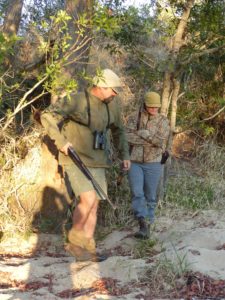
Lee has lived in the field for 24 years, and is known as an expert in many natural fields. He has authored five natural history books to date, some of which are about tracking and the Bushman hunters who pioneered the art. Lee’s published books include: a first and a revised edition of The Bushveld, The Okavango, Bushman Rock Art, Mammal Tracks and Sign of Southern Africa, and he is currently writing books on Invertebrate Tracks and Sign of Southern Africa, and Ethnobotany of Southern Africa. Lee is a FGASA “Scout” guide (one of only seven in the world, at present); Scout is a very unique qualification, requiring the achievement of Senior Tracker in the CyberTracker system, a SKS (Special Knowledge and Skills) in Dangerous Game encounters, and a Level 3 Field Guide. Lee is also a FGASA SKS Wild Flower guide, a Specialist Paleoanthropological guide and an SKS Birding guide. All of the above qualifications represent the highest achievements that can be obtained in their respective organizations. Lee is a renowned trainer of trackers (and guides) in South Africa, and has trained and assessed in Kenya, Rwanda, Botswana, Zambia and several other countries. He is well known for his depth-of-knowledge and infectious enthusiasm in conveying information about the natural world.
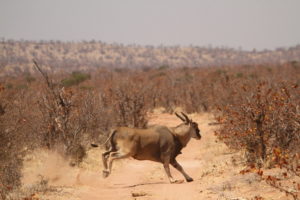
The animals we will follow and get to see are the self-same creatures upon whose spoor this art was developed. As hunter-gatherers the San honed their skills, so it is especially fitting that we will initially explore a specially selected part of the South African Waterberg region, well known for its massive diversity of prey animals such as antelope and other ungulates. These were considered food animals by the San, of varying ranks, with the huge powerful eland revered above all others. White rhino’s, Cape buffalo, brown hyenas, leopards and many other species also abound here, leaving myriad signs for us to see and interpret.
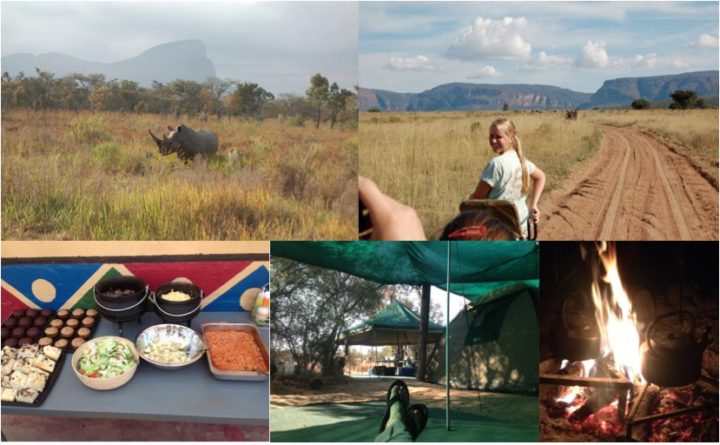
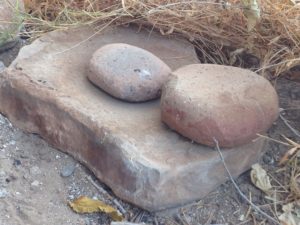
The Groenberg (Green Mountain) of the Waterberg geological super-group is a middle-veld (1200 meters, or about 3600 feet, above sea level) thorny savannah region, with scrubby Bushveld and wide open plains. This will be where we will stay, on the banks of an ancient dry river bed. As a region it is well known for its combination of arid western species and mesic eastern species. Both of your instructors have spent much time in this part of the world and love it dearly.
This Waterberg region is also an ancient haunt of the San-Bushman. The stone tools they manufactured are still found littering the ground. Within a stone’s-throw of the camp we will see evidence of this industry. Millions of years prior to now, Australopiths roamed here and fossil evidence from the region has pointed to clues about their social structures and beliefs, as well as their diets and day to day life.
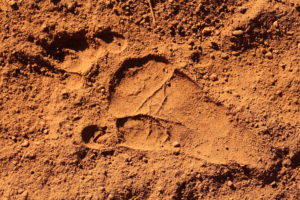
After these four days in the Waterberg, we shall travel northwest, into a dry sandy region studded with majestic baobab trees and cross the international border into the desert country of Botswana. This border region, known as the Tuli, is truly a land of elephants. The name Tuli actually means dust, and this definitely describes the substrate of the region. Here one could, if desired, identify an individual baboon by its fingerprints left in the dust!
Predators also abound here, including African lion, spotted hyena, leopard, brown hyena, aardwolf, black-backed jackal, African civet, small-spotted genet, African wild cat, Nile crocodile and many more.
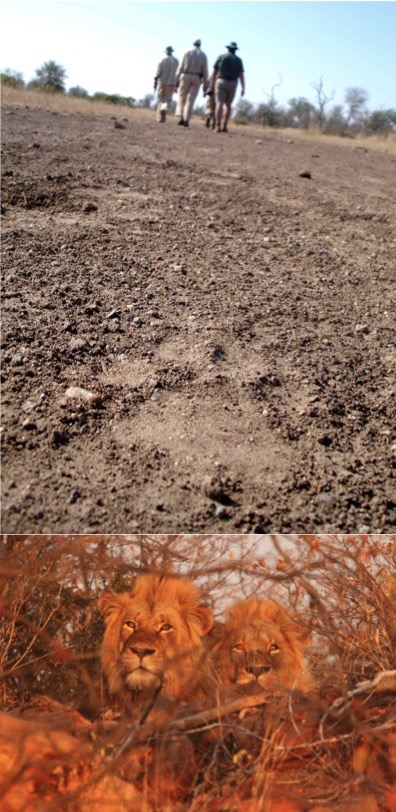
We will stay at Serolo Camp, on the edge of a floodplain, thick with Croton megalobotris trees and distorted and convoluted, butterfly leaved Colophospermum mopane. This tiny but beautiful lodge will be exclusively ours, and our meals will be catered for us (alcoholic beverages not included).
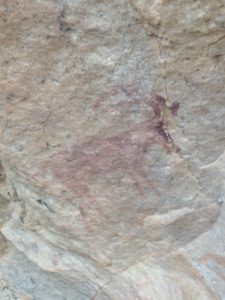
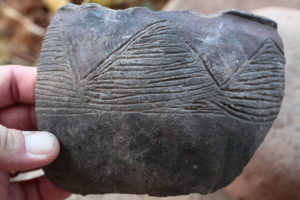
The ancient art of the Bushman is also to be seen here at Tuli in simplistic monochromatic cave paintings of dark red ochre. Day to day implements in the form of stone tools are also abundant.
In more recent times (800-1200 AD) ancient city-like civilizations also arose here and the artistically adorned pot sherds of the Leopard Kopje and Zhizo people litter the ground. An entire history will unfold before you in the retelling of tales by your guides. Additionally we may see the traded blue glass beads from the ancient East, when who-knows which Chinese or Arab Junks and Dhows traded the eastern coasts and the inevitable internal trade routes of Africa.
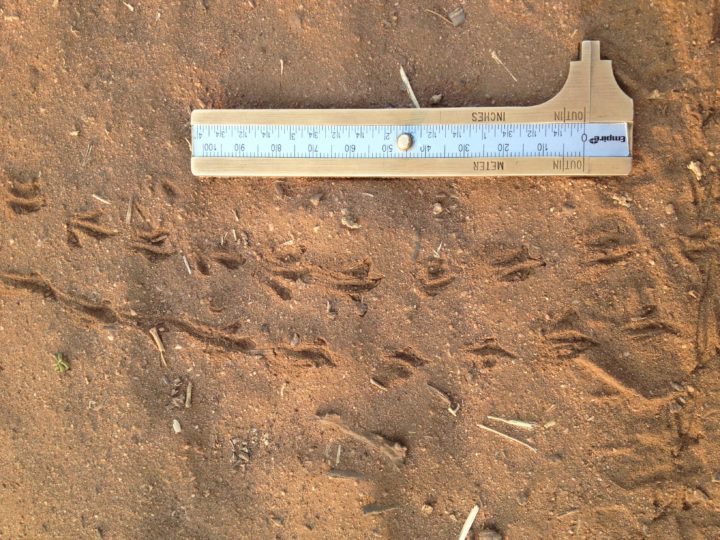
Regarding tracking, this region is absolutely second to none. The powdery sand-dust of this ancient Karoo group sandstone is amongst the most receptive substrates you will ever see, with great detail being captured, unbelievably right down to the finest details of invertebrate and rodent tracks! This incredible detail is held by the ground in stasis for us to observe…
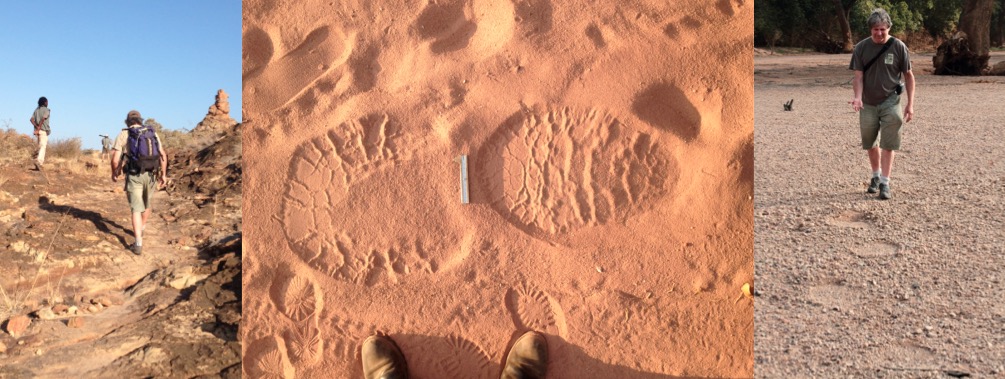
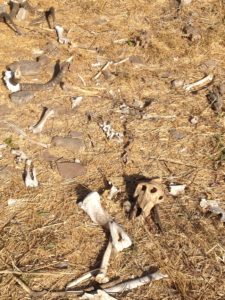
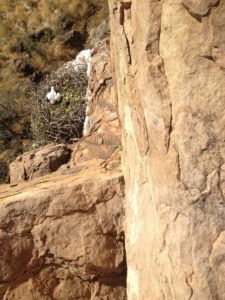
Hyena dens, elephant trails through stunted Mopane woodland, the dry Shashe river bed, Verreaux’s eagle nests, the roar of a lion and the ancient hillsides with unrivaled views are waiting for us in this vast and tangibly ancient landscape. This is definitely one of the most rewarding environments Southern Africa has to offer a tracker.
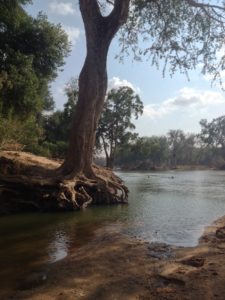
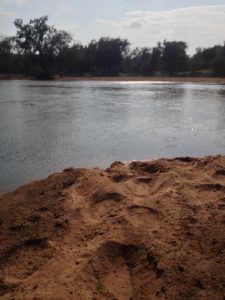
The region is situated on the northern bank of the mighty Limpopo River (alternately known as the Vhembe, which means ‘The Gatherer’ in the language of the Venda people, and referring to her violent floods), the Tuli is a treasure trove for the wildlife tracker!
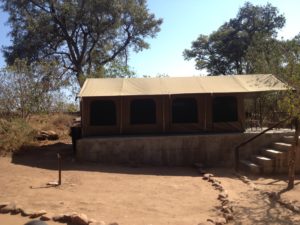
Our African Tracker Experience includes 12 days of all-day adventures, trailing, interpreting track and sign, comfortable, (though rustic) tented accommodation, wholesome meals, all ground transfers (with light lunches on the longer journey to and from Tuli), wildlife safaris by vehicle, expert lessons and guidance in class and in the field (on many subjects such as tracking, Human and African history, geology, mammal behavior, animal and bird sounds) and, of course, at the end of it all an opportunity for assessment of your skills (on the Cybertracker standard) in tracking in the African environment. On our seventh day in the Tuli an optional track and sign assessment will take place.
In November, the 12 day program focuses more intensely on Trailing. Flying into the little town of Hoedspruit, you will travel less than one hour to our camp on the banks of the perennially flowing Olifants (Elephants) River. As the wildlife moves outside the electric fence of Ngala (lion) camp, you will live in large canvas tents with comfortable wooden-frame beds and mattresses. Other amenities include environmentally friendly solar lighting, a huge gathering place around the fire where your wholesome and delicious meals are provided for you, water-saving hot water showers, flushing toilets, and weekly laundry service. But we won’t be spending too much time in camp, because the wildlife are on the other side of the fence! Participants wanting to be evaluated on the CyberTracker standard for Trailing will have the option to add a day or two onto the program to be evaluated (at minimal cost, minimum 2 persons per day).
Please see the FAQ sheet (Frequently Asked Questions) for more information.
Truly an incredible experience all around, exploring some of Africa’s jewels.
8 persons, Maximum.
Click here to Contact Us and reserve your spot.
